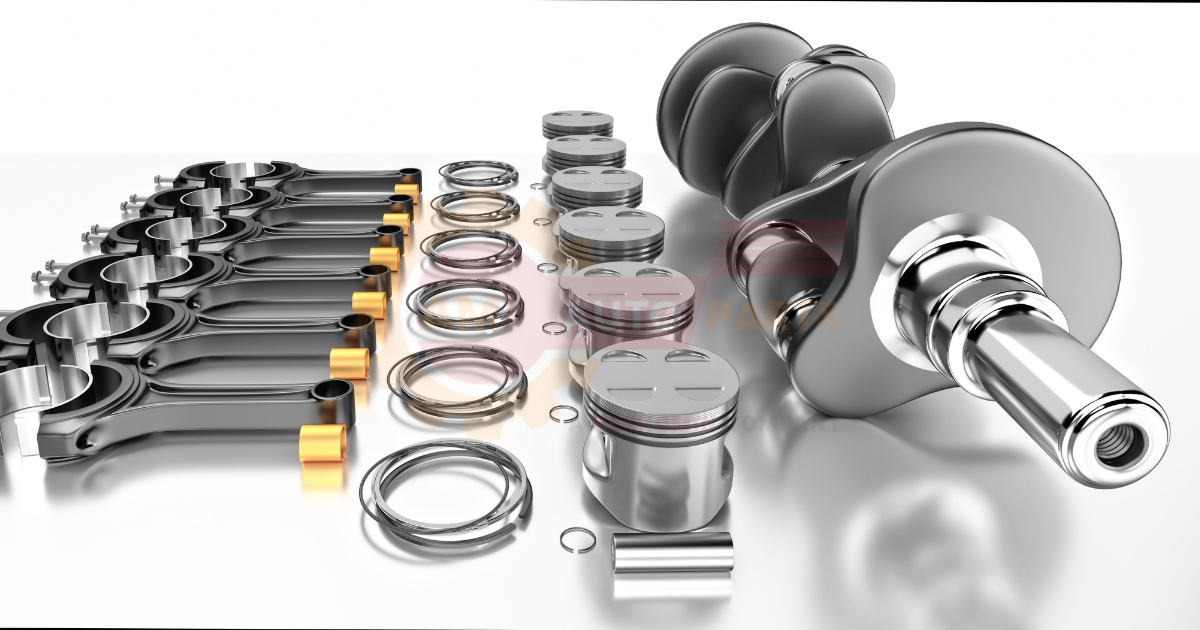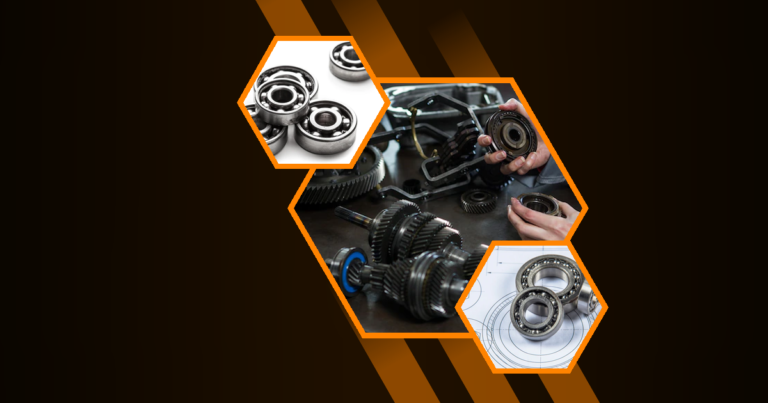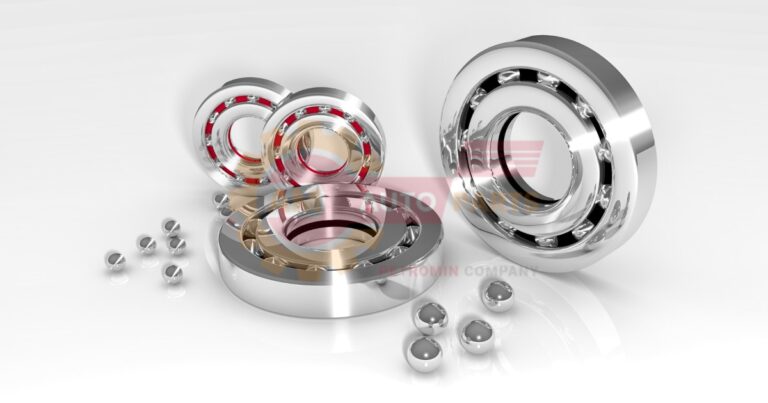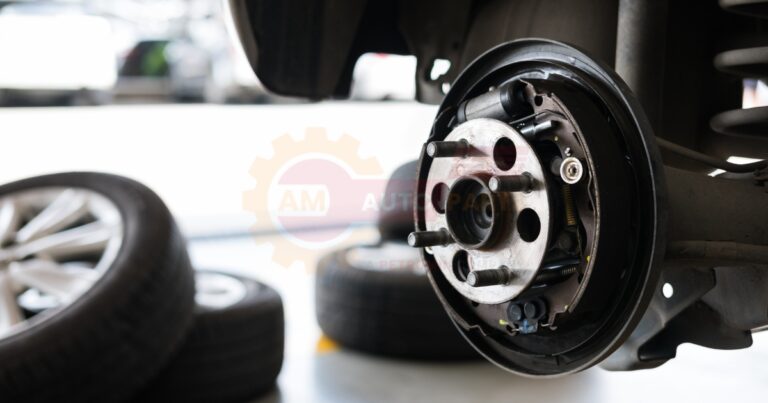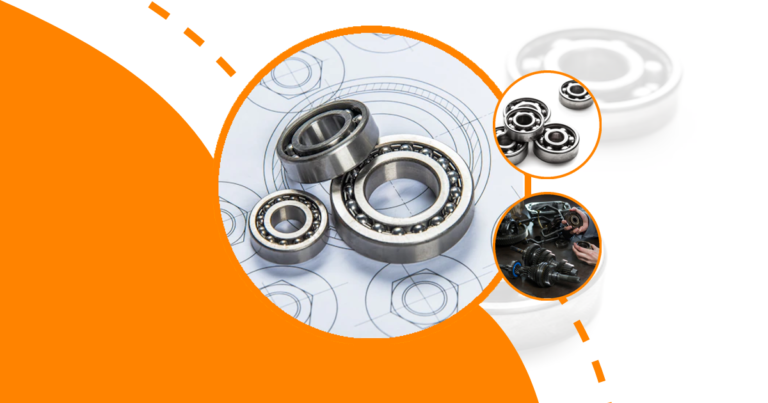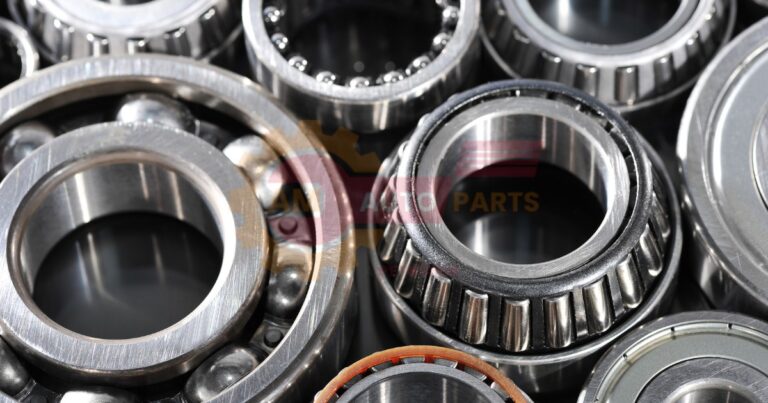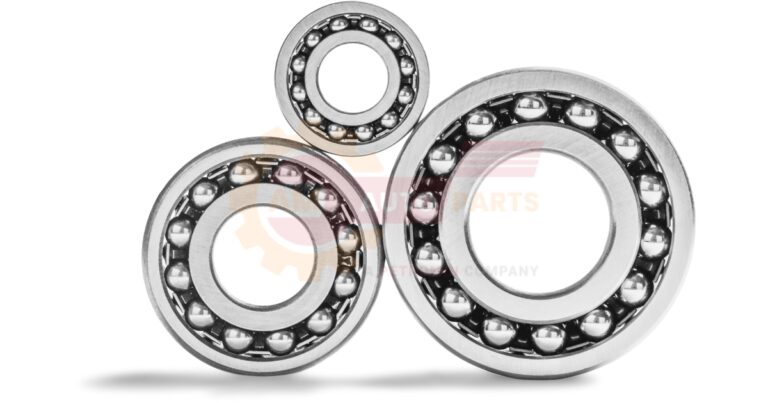Understanding Crankshaft Bearings
Crankshaft bearings are crucial components in an engine, playing a vital role in ensuring smooth and efficient operation. These bearings support the crankshaft, allowing it to rotate freely while minimizing friction and wear. Without crankshaft bearings, the engine’s performance would be severely compromised, leading to potential damage and reduced efficiency.
Importance of Crankshaft Bearings in Engine Performance
Crankshaft bearings are essential for maintaining the engine’s overall health. They reduce friction between the moving parts, ensuring that the crankshaft can rotate smoothly. This, in turn, helps in maintaining optimal engine performance and longevity. Properly functioning crankshaft bearings also contribute to fuel efficiency and reduce the risk of engine failure.
- Reduces friction : Minimizes wear and tear on the crankshaft.
- Enhances performance : Ensures smooth rotation and efficient power transfer.
- Increases longevity : Prolongs the life of the engine components.
Types of Crankshaft Bearings
Plain Bearings: Definition and Why They Are Commonly Used
Plain bearings, also known as journal bearings, are the most commonly used type of crankshaft bearings. They consist of a simple design with a smooth surface that supports the crankshaft. These bearings are favored for their simplicity, cost-effectiveness, and ability to handle high loads.
- Simple design : Easy to manufacture and install.
- Cost-effective : Lower production costs compared to other types.
- High load capacity : Can handle significant stress and pressure.
Roller Bearings vs. Plain Bearings: Pros and Cons
Roller bearings use rolling elements to reduce friction, while plain bearings rely on a smooth surface. Each type has its advantages and disadvantages.
| Feature | Roller Bearings | Plain Bearings |
| Friction | Lower friction due to rolling elements | Higher friction due to sliding contact |
| Load Capacity | Suitable for moderate loads | Can handle higher loads |
| Cost | More expensive | More affordable |
| Maintenance | Requires regular lubrication | Less maintenance required |
Needle Bearings: Specific Applications and Benefits
Needle bearings are a type of roller bearing with long, thin rollers. They are used in applications where space is limited and high load capacity is required.
- Compact design : Ideal for tight spaces.
- High load capacity : Can support heavy loads despite their small size.
- Reduced friction : Provides smooth operation with minimal resistance.
Crankshaft Bearing Materials
Common Materials Used for Crankshaft Bearings
Crankshaft bearings are made from various materials, each offering different benefits. Common materials include:
- Babbitt : A soft metal alloy that provides excellent conformability and embeddability.
- Bronze : Known for its strength and durability.
- Aluminum : Lightweight and offers good heat dissipation.
- Copper-lead : Combines strength with good fatigue resistance.
The Impact of Material Choice on Bearing Longevity and Efficiency
The choice of material significantly affects the bearing’s performance and lifespan. For instance, Babbitt bearings are excellent for reducing friction but may wear out faster under heavy loads. Bronze bearings, on the other hand, offer greater durability but may require more maintenance.
- Babbitt : Best for low-load applications.
- Bronze : Suitable for high-load, high-stress environments.
- Aluminum : Ideal for high-speed applications due to its heat dissipation properties.
- Copper-lead : Offers a balance between strength and fatigue resistance.
Crankshaft Bearing Maintenance
Signs of Wear and When to Replace Crankshaft Bearings
Regular maintenance is crucial for ensuring the longevity of crankshaft bearings. Signs of wear include unusual noises, increased vibration, and reduced engine performance. If any of these symptoms are observed, it may be time to replace the bearings.
- Unusual noises : Grinding or knocking sounds.
- Increased vibration : Excessive shaking or movement.
- Reduced performance : Decreased power and efficiency.
Tips for Maintaining Crankshaft Bearings to Ensure Engine Health
Proper maintenance can extend the life of crankshaft bearings and improve engine performance. Here are some tips:
- Regular inspection : Check for signs of wear and tear.
- Proper lubrication : Ensure bearings are adequately lubricated to reduce friction.
- Timely replacement : Replace worn bearings promptly to prevent further damage.
Crankshaft Bearing Installation
Step-by-Step Guide to Replacing Crankshaft Bearings
Replacing crankshaft bearings requires precision and the right tools. Here is a step-by-step guide:
- Remove the crankshaft : Carefully disassemble the engine to access the crankshaft.
- Inspect the crankshaft : Check for any damage or wear.
- Remove old bearings : Carefully remove the worn bearings.
- Clean the area : Ensure the bearing surfaces are clean and free of debris.
- Install new bearings : Place the new bearings in position.
- Reassemble the engine : Reinstall the crankshaft and other components.
Tools and Techniques for Proper Bearing Installation
Using the right tools and techniques is essential for successful bearing installation. Common tools include:
- Bearing puller : For removing old bearings.
- Torque wrench : To ensure proper tightening of bolts.
- Lubricant : To reduce friction during installation.
Crankshaft Design Considerations
Number of Main Bearings and Their Impact on Engine Design
The number of main bearings in an engine affects its stability and performance. More bearings provide better support but may increase complexity and cost.
- Fewer bearings : Simpler design, lower cost.
- More bearings : Increased stability, better performance.
Bearing Caps and Their Role in Crankshaft Stability
Bearing caps secure the crankshaft bearings in place, ensuring stability and alignment. They are critical for maintaining the proper function of the crankshaft.
- Alignment : Ensures the crankshaft remains properly aligned.
- Stability : Provides additional support to prevent movement.
The Difference Between 4 Bolt Main and 6 Bolt Main Configurations
The number of bolts in the main bearing caps affects the engine’s strength and durability. A 4 bolt main configuration is common in standard engines, while a 6 bolt main is used in high-performance applications.
| Configuration | Strength | Application |
| 4 Bolt Main | Standard strength | Regular engines |
| 6 Bolt Main | Increased strength | High-performance engines |
Crankshaft Polishing and Bearing Longevity
The Process of Crankshaft Polishing
Crankshaft polishing involves smoothing the surface of the crankshaft to reduce friction and wear. This process enhances the performance and longevity of the crankshaft bearings.
- Smoothing : Removes imperfections and rough spots.
- Reducing friction : Ensures smoother operation.
- Enhancing performance : Improves overall engine efficiency.
How Polishing Affects the Lifespan of Crankshaft Bearings
Polishing the crankshaft can significantly extend the life of the bearings. By reducing friction and wear, polished crankshafts help maintain optimal bearing performance.
- Extended lifespan : Reduces wear and tear on bearings.
- Improved efficiency : Enhances engine performance.
- Reduced maintenance : Lowers the need for frequent replacements.
Advanced Topics in Crankshaft Bearings
Innovations in Bearing Technology and Design
Recent advancements in bearing technology have led to the development of more efficient and durable crankshaft bearings. Innovations include:
- Advanced materials : New alloys and composites for better performance.
- Improved lubrication : Enhanced lubrication systems to reduce friction.
- Precision manufacturing : Tighter tolerances for better fit and function.
The Future of Crankshaft Bearings in Engine Development
The future of crankshaft bearings looks promising, with ongoing research and development aimed at improving performance and durability. Future trends may include:
- Smart bearings : Incorporating sensors for real-time monitoring.
- Eco-friendly materials : Using sustainable materials for manufacturing.
- Enhanced designs : Optimizing bearing shapes and sizes for better efficiency.
Conclusion
By understanding the importance of crankshaft bearings and following proper maintenance and installation practices, you can ensure the longevity and performance of your engine. For high-quality crankshaft bearings and other automotive parts, consider AM Autoparts for your needs. Wheel components explained Wheels have different parts like the rim hub spokes and tire that work together to help vehicles move smoothly on the road
Car Wheel Count Most cars have four wheels attached to help them move smoothly on roads Automotive bearing overhaul involves taking apart and fixing the parts that help wheels spin smoothly in cars and trucks Mechanics perform
Bearing repair costs can vary depending on the type of bearing and the extent of damage Fixing bearings quickly can help keep Bearing installation process Put the bearing in the right spot and make sure it fits snugly then secure it tightly so it stays in place and can spin smoothly
Diagnose faulty bearing by listening for unusual noises and feeling for vibrations Check for excessive heat and inspect the bearing for visible damage or wear Wheel bearing tightness is important for smooth wheel rotation Proper
Bearing size determination helps engineers choose the right size bearings for machines Bearing sound detection helps find problems in machines by listening for unusual noises from moving parts
Bike bearing essentials are the important parts that help your bike wheels spin smoothly These small but crucial components reduce friction and make your ride more enjoyable
